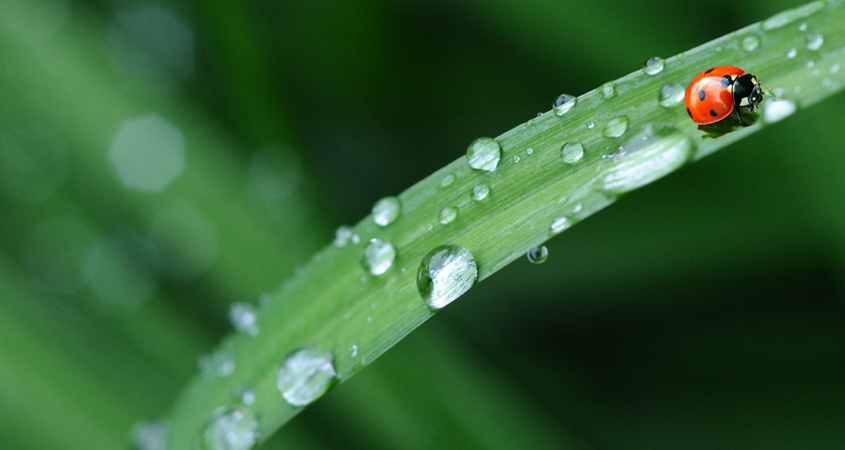 Maximize your landscaping soil's ability to retain and save rainfall and irrigation for drier days by creating a water savings account. Photo: D. Douk/Creative Commons
Maximize your landscaping soil's ability to retain and save rainfall and irrigation for drier days by creating a water savings account. Photo: D. Douk/Creative CommonsBuilding a Water Savings Account
Managing water wisely in a landscape is a lot like managing a bank savings account.
Approximately half of the water spent by average California homes is used outdoors, mostly for irrigation. Unfortunately, up to half of commercial and residential irrigation water is squandered by evaporation, wind, improper system design, or overwatering, according to the U.S. Environmental Protection Agency.
Using landscape irrigation efficiently can significantly reduce overall household water consumption while leaving adequate water in the ground to cover your plants’ needs.
During the winter in metropolitan San Diego County, healthy soil can absorb water in surprisingly large quantities to be released slowly to plants as they use it during drier months – like using a savings account to pay for expenses over time.
That’s particularly true during wet spells like we’ve had in late November and early December 2018; no need to spend irrigation water when Mother Nature is making the deposits for you.
Balance your water bank account
Water that enters the soil as rain or irrigation is like a deposit into a soil checking account.
By keeping track of those transactions of water in and water out, it is possible to know how much water in the soil “reservoir” is available in the landscape at any given time for the plants to access.
The initial soil bank balance is determined by direct observation or is assessed after a thorough wetting of the soil by irrigation or winter rains. Every day, plants take small amounts of water from the soil. Rain and irrigation fill up the water bank again. The trick is to make sure this “account” does not get overdrawn.
How can you tell when the account is depleted? Smart irrigation controllers and landscape professionals can calculate this for you. You can also rely on a soil probe, or even testing the landscape by feeling the soil surface with your fingers.
When oxygen and water are balanced in the soil, the amount of water lost through evapotranspiration is similar to paying fees on your savings account. Shading the soil surface with plant materials and mulch protects water in the soil by slowing evapotranspiration and leaving more water in your soil’s account.
This article was inspired by the 71-page Sustainable Landscapes Program guidebook available at SustainableLandscapesSD.org. The Water Authority and its partners also offer other great resources for landscaping upgrades, including free WaterSmart classes at WaterSmartSD.org.



